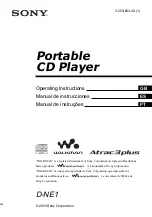
NOTE:
The TFTP protocol does not support username and password. Entering
a username and password in the TFTP version results in a command error.
The protocol specified in the command always overrides the protocol associated with
the host entry, if any, in the host table. Some protocols, such as FTP, require a username
and password with each request. For the URL version of the
copy
command, the following
sequence is followed:
•
If the command contains a username, the username and password specified in the
command are used. The password null is used if the command does not contain a
password.
•
If the location in the URL is a hostname with a corresponding host entry (created by
the
host
command), the username and password of the host entry are used. A host
entry that is created without an explicit user name is created with the default username
of anonymous and password of null.
The location is the IP address or hostname of the remote file server. The directory/filename
is the full path of the file relative to the user login root path.
The characters in the URL format can be encoded. Any of the delimiter characters can
be used in the host, username, password, and directory and file fields when added as
encoded characters. The encoded characters must be three characters, starting with a
percent and followed by the two hexadecimal digits that are the ASCII equivalent. The
system converts all printable characters before passing them to the protocol support.
Unprintable characters (0-012F and 0x7f-0x7F) are not converted and are passed directly
to the protocol. Printable characters (0x20– 0x7E) are decoded and all others
(0x80–0xFF) are rejected.
In the following example, the username contains the @ delimiter character encoded as
%40, and the directory passed to the FTP protocol layer is /dirA/dirB/dirC. The delimiter
between the hostname and directory is a forward slash (/) character. To add a slash to
the start of the directory specification, add the encoded slash after the host and directory
delimiter.
ftp://user%40%40name:pwd@mary/%2fdirA/dirB/dirc/fileA
In the following example, the directory passed to the FTP protocol layer is dirA/dirB/dirC.
ftp://username:pwd@mary/dirA/dirB/dirc/fileA
Using the copy Command
Table 37 on page 290 shows the types of files that you can transfer between the locations
by using the
copy
command.
289
Copyright © 2010, Juniper Networks, Inc.
Chapter 5: Managing the System
Summary of Contents for JUNOSE 11.3
Page 6: ...Copyright 2010 Juniper Networks Inc vi...
Page 8: ...Copyright 2010 Juniper Networks Inc viii JunosE 11 3 x System Basics Configuration Guide...
Page 24: ...Copyright 2010 Juniper Networks Inc xxiv JunosE 11 3 x System Basics Configuration Guide...
Page 32: ...Copyright 2010 Juniper Networks Inc 2 JunosE 11 3 x System Basics Configuration Guide...
Page 146: ...Copyright 2010 Juniper Networks Inc 116 JunosE 11 3 x System Basics Configuration Guide...
Page 166: ...Copyright 2010 Juniper Networks Inc 136 JunosE 11 3 x System Basics Configuration Guide...
Page 432: ...Copyright 2010 Juniper Networks Inc 402 JunosE 11 3 x System Basics Configuration Guide...
Page 488: ...Copyright 2010 Juniper Networks Inc 458 JunosE 11 3 x System Basics Configuration Guide...
Page 524: ...Copyright 2010 Juniper Networks Inc 494 JunosE 11 3 x System Basics Configuration Guide...
Page 554: ...Copyright 2010 Juniper Networks Inc 524 JunosE 11 3 x System Basics Configuration Guide...
Page 566: ...Copyright 2010 Juniper Networks Inc 536 JunosE 11 3 x System Basics Configuration Guide...
Page 588: ...Copyright 2010 Juniper Networks Inc 558 JunosE 11 3 x System Basics Configuration Guide...
Page 613: ...PART 3 Index Index on page 585 583 Copyright 2010 Juniper Networks Inc...
Page 614: ...Copyright 2010 Juniper Networks Inc 584 JunosE 11 3 x System Basics Configuration Guide...
Page 632: ...Copyright 2010 Juniper Networks Inc 602 JunosE 11 3 x System Basics Configuration Guide...
















































